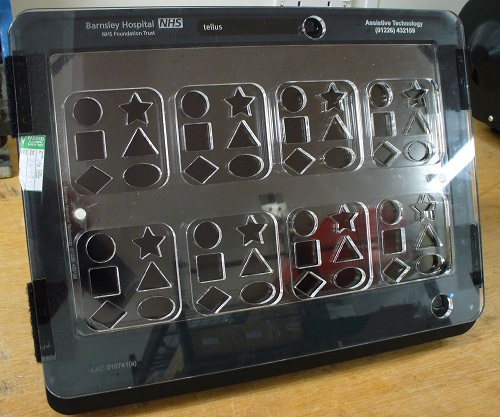Working with clients with visual impairments offers challenges within the field of AAC that are unique and can require imaginative solutions to enable the client access to their device.
After supporting a young child with no functional vision for numerous months, progress in terms of his ability of navigating through the ‘pages’ of his language package on his communication aid was limited. This child was accessing his 45 location Wordpower language package set via a standard key guard and appeared initially to be making good progress in terms of remembering where specific vocab items were located.
As a navigation strategy, the child was supported to place his hand at the top left of his device and then move down the columns and then from left to right across the rows. He was able to press a few cells before his chosen cell and used the auditory feedback to cue him in as to where he was on the page. However after a period of use of this method his progress appeared to have plateaued and his targeting was not getting more accurate.
After discussion with one of our mechanical techniologists a multi sensory keyguide was developed using the department’s new laser cutter. This keyguide was layered – the top layer splits the page into eight sections and then on the bottom layer within each section six shapes (circle, star, square, triangle, diamond, oval) are cut. In this way the child is provided with a sensory code/cue for each cell of the vocabulary package and this should allow himself to orientate himself and more easily learn the use of the system.

Multi sensory keyguide showing layered shapes

Multi sensory Keyguide showing vocabulary
We are looking forward to reviewing this child and seeing if this multi sensory keyguide has supported his ability to learn his AAC language package more effectively.